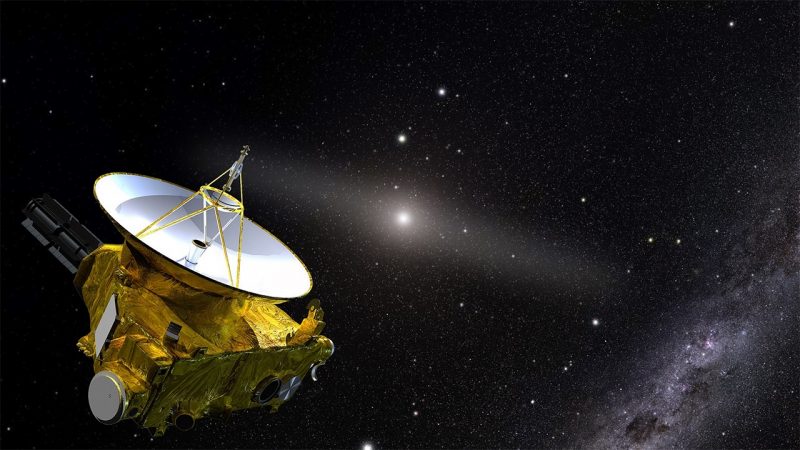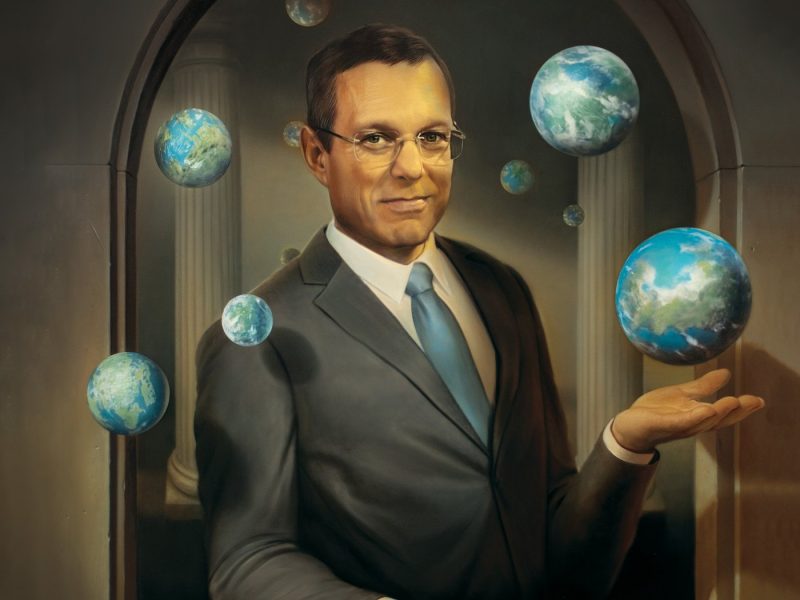
Harvard astronomer muses about aliens
Only 5 spacecraft from Earth are now heading out of our solar system. None are aimed toward a star system. Even if they were, they wouldn’t reach another star system for tens of thousands – or hundreds of thousands – of years.
Avi Loeb is a Harvard astronomer who entertains the idea of alien civilizations. He has proposed that ‘Oumuamua, an interstellar object that passed through our solar system in 2017, might be an alien spacecraft. He has pondered whether aliens created our universe in a lab. Last month, he suggested that a 2014 meteor that hit the Pacific Ocean might be alien tech. And on April 27, 2022, he emailed EarthSky with an analogy explaining how one of our spacecraft could crash into another world, creating an “alien artifact” for a distant civilization.
Our spacecraft as alien artifacts
Late last month, I exchanged emails with Loeb about the 2014 meteor – possibly from outside our solar system – that landed in the Pacific. Loeb wants to mount a search for it, because it might be alien technology. To prove his point, Loeb shared an analogy – in this case, a made-up story – based on some historical facts about the 2014 meteor – with EarthSky. He used the example of NASA’s New Horizons spacecraft, which visited Pluto in 2015 and is now headed out of our solar system, to describe what an earthly spacecraft might look like to an alien world. He wrote:
Imagine the New Horizons spacecraft continuing along its interstellar journey for a billion years and eventually crashing into a habitable planet around a distant star. Its equipment would be defunct by then, just a piece of space junk composed of heavy elements with a rough surface cratered by numerous impacts of interstellar dust, gas and cosmic-ray particles.
Now imagine the astronomers on that exoplanet discovering this technological junk as it approaches them under the lamppost of their parent star, which illuminates the darkness around them. They use their most advanced telescope to survey the sky for objects that may impact their planet, a warning system to avoid catastrophes from space rocks. But this object does not appear to behave like a common asteroid or comet that they had seen many times before. In particular, the object has no cometary tail. Yet it appears to be pushed away from the star by a force that declines inversely with distance squared because of the star’s radiation pressure on its walls.
Answers from ‘experts’
Loeb continued:
After hearing a colloquium about the anomalies of this object, one of the [alien] experts on space rocks states: ‘This object is so weird, I wish it never existed.’ Other experts choose to write a review article in a prestigious journal and argue that this must be a natural object and there is no reason to suspect anything else based on their vast knowledge on space rocks.
Months later, a team of other experts argues that this object is a rock of a type that they had never seen before, namely a hydrogen iceberg, and this is why the cometary tail is invisible. Another team suggests that the object is a dust bunny, pushed by light. And a third team of experts argues forcefully that it must be a nitrogen iceberg, chipped off the surface of a distant planet.

On a collision course with the planet
Loeb’s analogy continues:
The consensus among all experts is that even though the object is heading on a collision course with their planet, nothing should be done to deflect its trajectory, because all the likely explanations for its origin – a hydrogen iceberg, a fluffy dust bunny or a chunk of frozen nitrogen – imply that the object will burn up quickly high up in the atmosphere of the planet and nothing will survive to damage the surface.
The most sophisticated government satellites monitor the plunge of the object into the atmosphere. They reason that their data could decide which of the three explanations by the experts is the correct one, based on how quickly the object burns up and which gases are prominent in its fireball.
As New Horizons crashes into the planet’s atmosphere, it defies all expectations. The fireball occurs at a much lower altitude than expected for a dust bunny or for exotic icebergs.
The light curve from the meteor in the lower atmosphere implies that the meteor’s composition was much tougher than a common rock. Its material strength is far greater than that of any stony meteorite, not to speak about a dust bunny or exotic icebergs.
The astronomical community refuses to believe the government’s data, because it does not include measurement uncertainties. These uncertainties are classified for national security purposes, because the sensors used to collect the data are classified. After three years, the government issued a letter, along with the fireball light curve, stating that the object is highly unusual in its composition at the 99.999% confidence. In response, experts are widely cited in newspapers as saying that a letter from the government is not the way science is done and since the actual data is classified — they will never know what it means.
Searching for the alien artifacts
Loeb’s analogy concludes:
But a small group of scientists decides to scoop the ocean floor at the impact site and search for meteor fragments that survived the fireball. When they conduct the expedition, they find on the ocean floor a small box that was attached to the New Horizons spacecraft. The box contains thirty grams of the ashes of Clyde Tombaugh, a “human” who discovered a planet called “Pluto.” They immediately conclude that the interstellar meteor must have been a technological relic of a so-called “human civilization” that launched it a billion years ago.
And they also argue that this ‘human civilization’ was not particularly intelligent because it destroyed the genetic information about the person it wanted to commemorate. Tombaugh’s DNA was burned up into ashes that are no different from the ashes of a cigarette. This implies a primitive ritual that makes little sense for an intelligent science-based community. ‘If humans are still out there, we want nothing to do with their destructive mindset,’ they conclude in their report. End of story.
An analogy for the 2014 meteor
Loeb’s analogy for the 2014 interstellar meteor is part rant, part answer to his critics. He reimagines our own interstellar spacecraft reaching another world many, many years into the future. He asks that surely, if it could happen on another world, couldn’t it happen here?
Loeb concluded:
The above storyline is anchored in facts. Anyone who knows me would testify that I do not like science fiction.
Bottom line: Harvard astronomer Avi Loeb muses about what might happen if an earthly spacecraft crashed down on a distant planet, inhabited by intelligent aliens.
The post Harvard astronomer: Earthly spacecraft as alien artifacts first appeared on EarthSky.
0 Commentaires